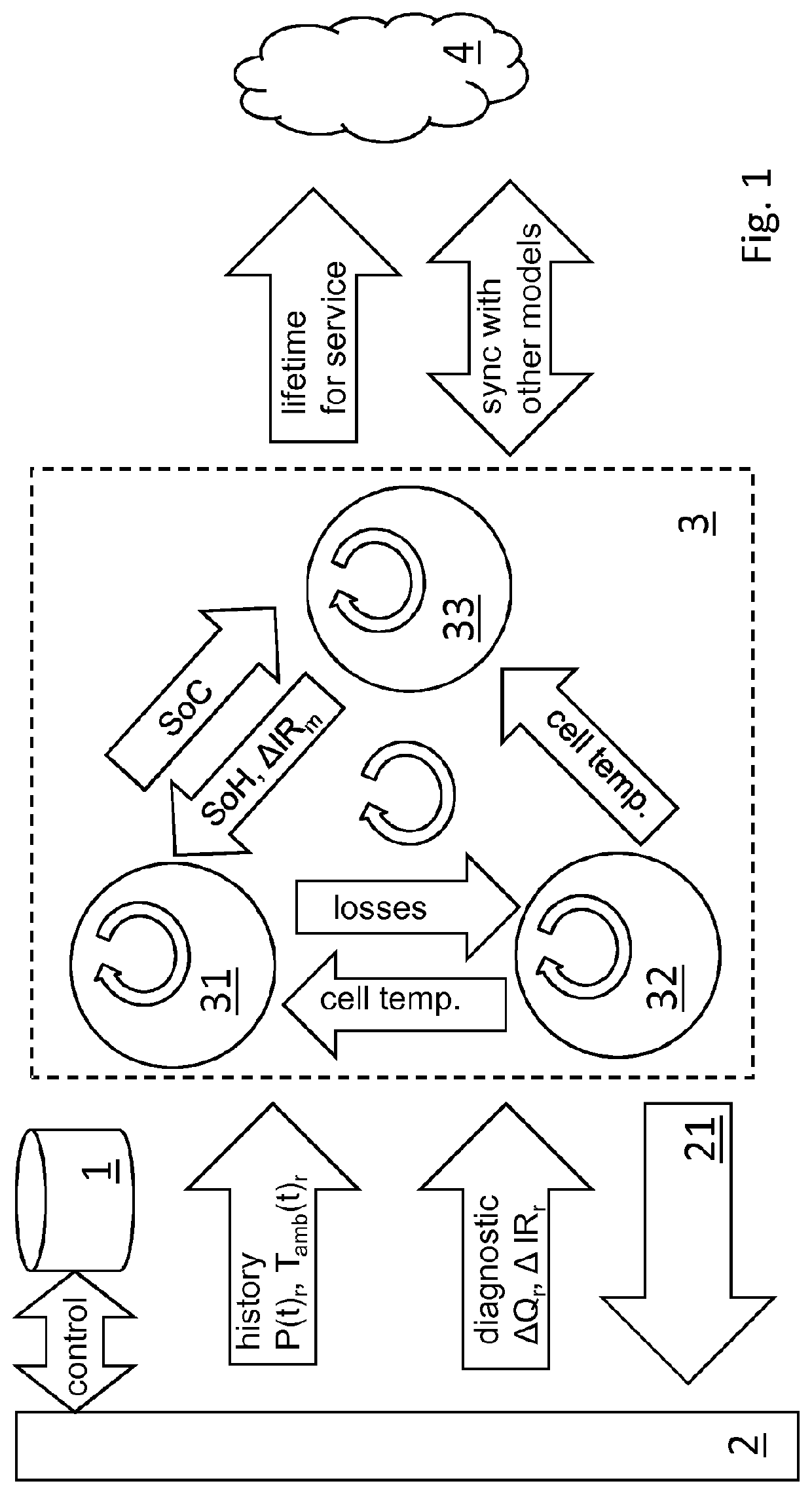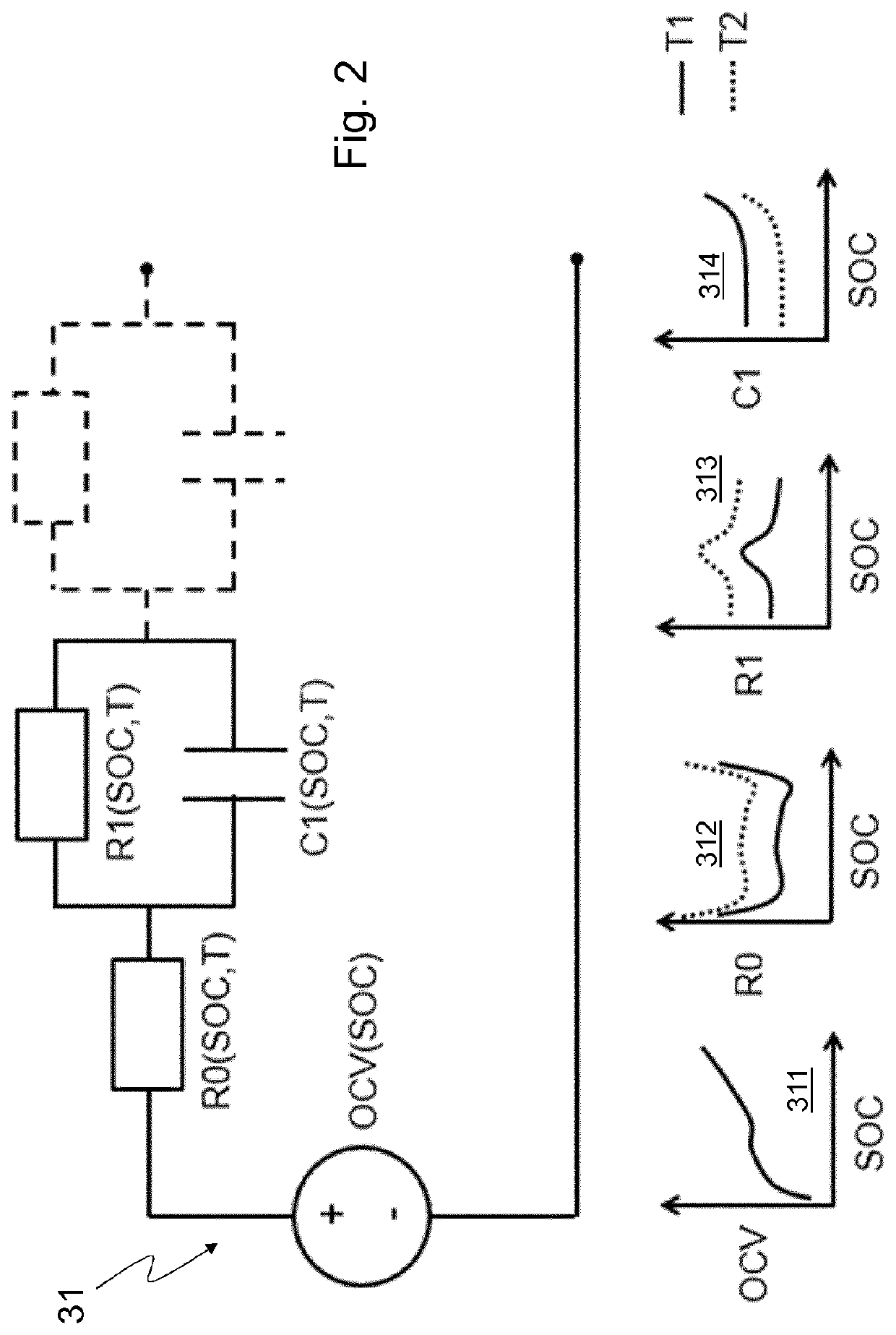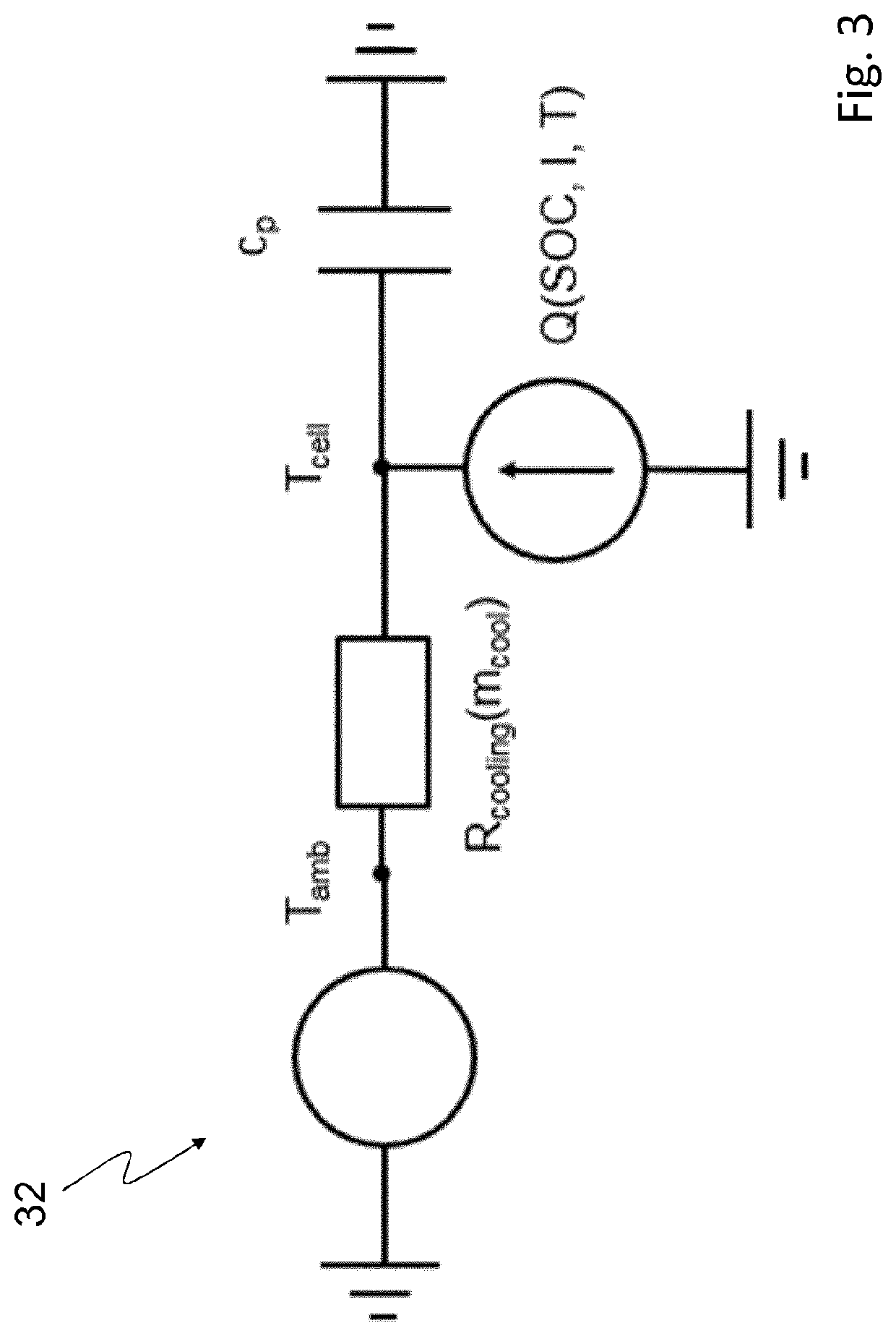Method and System For Controlling a Rechargeable Battery
a rechargeable battery and battery technology, applied in secondary cell servicing/maintenance, instruments, electrochemical generators, etc., can solve the problems of reducing the capacity of the battery to hold charge, increasing losses, and complex process of battery aging, and achieve the effect of precise estimation of future heat loss
- Summary
- Abstract
- Description
- Claims
- Application Information
AI Technical Summary
Benefits of technology
Problems solved by technology
Method used
Image
Examples
Embodiment Construction
[0077]FIG. 1 shows an exemplary embodiment of a battery management system and of a method for controlling operational variables of a battery 1, which is controlled by a closed loop control system 2.
[0078]The battery management system comprises a numerical battery model 3, which in turn comprises a parametrized electric model 31, a parametrized thermal model 32, and an ageing model 33.
[0079]FIG. 2 shows an exemplary embodiment of a parametrized electric model 31 to be used as part of a battery management system or method according to the present invention. The parametrized electric model 31 is an equivalent circuit model with a voltage source characterized by state-of-charge (SoC) dependent open circuit voltage (VOC), one serial resistor, a resistance R0 of which is SoC dependent and optionally dependent on temperature T, in particular internal battery temperature Tcell; and at least one RC element electrically connected in series with the serial resistor, and comprising an RC resist...
PUM
| Property | Measurement | Unit |
|---|---|---|
| current | aaaaa | aaaaa |
| power | aaaaa | aaaaa |
| state of charge | aaaaa | aaaaa |
Abstract
Description
Claims
Application Information
 Login to View More
Login to View More - R&D
- Intellectual Property
- Life Sciences
- Materials
- Tech Scout
- Unparalleled Data Quality
- Higher Quality Content
- 60% Fewer Hallucinations
Browse by: Latest US Patents, China's latest patents, Technical Efficacy Thesaurus, Application Domain, Technology Topic, Popular Technical Reports.
© 2025 PatSnap. All rights reserved.Legal|Privacy policy|Modern Slavery Act Transparency Statement|Sitemap|About US| Contact US: help@patsnap.com



